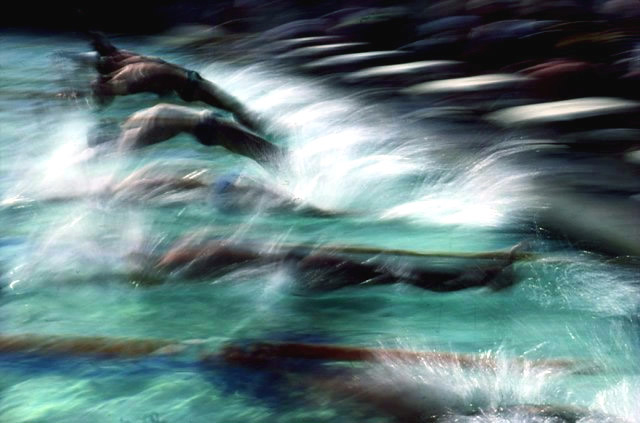For my third photo shoot I want to explore another technique to capture and portray time, one that doesn’t capture an instantaneous movement but a period of time: long exposure and slow shutter speed.
 |
| Ernst Haas by Glenn Beier |
One artist that for long time during his experimentation dealt with motion and time and slow shutter speed is Ernst Haas, which is the second artist that’s going to influence my next photo shoots. He was born to artistic parents in Vienna, in 1921. He became in interested in photography after his father’s death, which was an amateur photographer. He moved in 1951 in the United States and started experimenting with Kodachrome color film. He quickly became one of the most celebrated photographers of the 20th century and he is considered one of the pioneers of color photography. He is best known for his vibrant and colorful compositions, which were in contrast with the black and white photographs typical of the time. He saw the shift form black and white to color as a metaphor for what he saw around him during the war years in Europe:
“ […]as the black and white ones, or even better, the gray years. The gray times were over. As at the beginning of a new spring, I wanted to celebrate in color the new times, filled with new hope.”
He is also best know for always pushing himself and experimenting. He moved on from static representation of motion and he started experimenting with slow shutter speed to create impressionistic - and often abstract - blurs. He started painting with his camera.
“To express dynamic motion through a static moment became for me limited and unsatisfactory […] The basic idea was to liberate myself from this old concept and arrive at an image in which the spectator could feel the beauty of a fourth dimension, which lies much more between moments than within a moment. In music one remembers never on tone, but a melody, a theme, a movement. In dance, never a moment, but again the beauty of a movement in time and space.”
Photographing runners, fast moving cars and swimmers using slow shutters speed he created blurred images of the subject giving an impression of speed and dynamism.
In this picture he uses slow shutter speed to photograph a flying bird. The result is abstract and impressionistic. The subject isn’t the bird, but the way he sinuously flies: its motion. Many of his composition, like the one, are so abstract and blurry that appear like paintings. This is an effect that really intrigues me and that I would like to achieve in my photoshoot.
 |
| La Suerte De Capa, Pamplona, Spain, 1968 © Ernst Haas |
Another technique that Haas used in several of his images was moving the camera during the exposure. His image “La Suerta De Capa” is an amazing example this sense of motion and excitement combined with beautiful colors.
Haas took inspiration from the world around him, whether it was music, literature, painting, or people. In his later years, Haas started experimenting with audiovisual presentations – combining music and poetry with his images. He was continuously trying to find new ways to express himself – pushing the limits of what his camera could do and what he could do with it.






